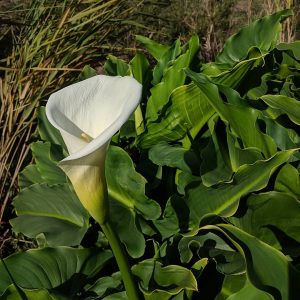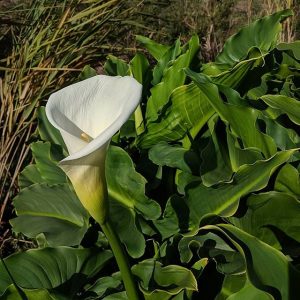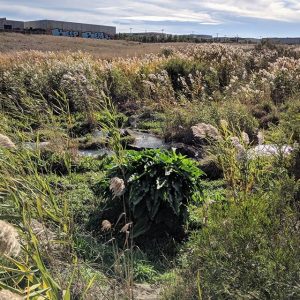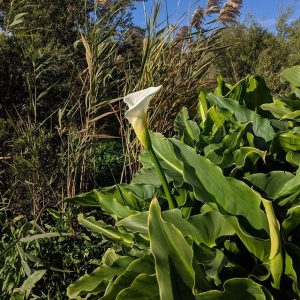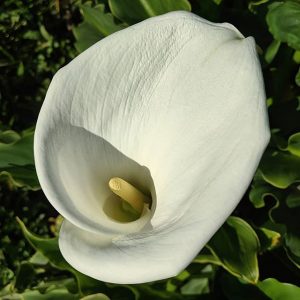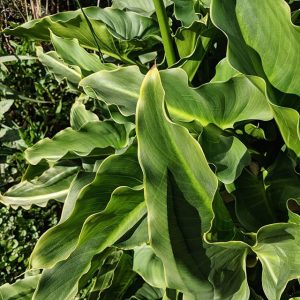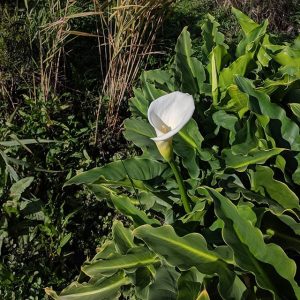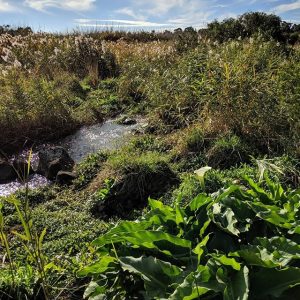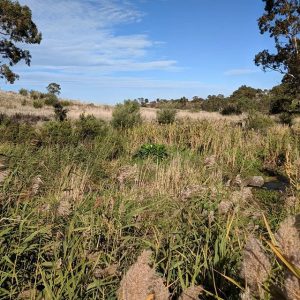Arum Lily (Zantedeschia aethiopica), favoured Southern African cut flower and damaging invader of drainages, riparian edges and boggy landscapes.
Not a lily at all, Arum Lily derives from a pan-tropical lineage of weirdo monocots (the Arum family, Araceae) that also produced Monstera, Philodendron, Peace Lily (also not a lily), Corpse Flower and duckweed.
Because the Victorians loved anything with funereal bearing, Arum Lily was among the earliest suite of ornamental plants brought to colonial Australia. It was subsequently promoted to small growers here as a floral cash crop, and later books and columnists continued to push the plant as a solution for boggy areas of home gardens well into the mid-20th century. First recorded in naturalised conditions in South Australia in 1903, the species would have made many separate escapes from cultivated (and dumped) plantings and is now widely distributed in coastal and riverine settings across southern Australia.
The plant’s invasiveness has been particularly pronounced here in Victoria and in parts of Western Australia, where it was declared noxious in the early 1950s (it is toxic to livestock and people). Plants are spread vegetatively by transported root stems and tubers, and by seed eaten by birds, foxes and stock. Along Melbourne’s semi-managed and flood-pulsed waterways, small solitary clumps of Arum Lily are the most typical sight; however, where left unchecked in favourable conditions the species can form large stands to the exclusion of other vegetation.
This well-established clump was found along the Merri Creek in Campbellfield, in the area now known as Galada Tamboore. A remote, boggy and often multichannelled stretch of the creek surrounded by dense stands of Phragmites australis, despite active rehabilitation efforts by a number of parties this apparently remains a good place for Arum Lily to hide and prosper.
View Original Post on Instagram
Search for information about Zantedeschia aethiopica in the Flora of Victoria
View information and occurrences of Zantedeschia aethiopica on the Atlas of Living Australia

